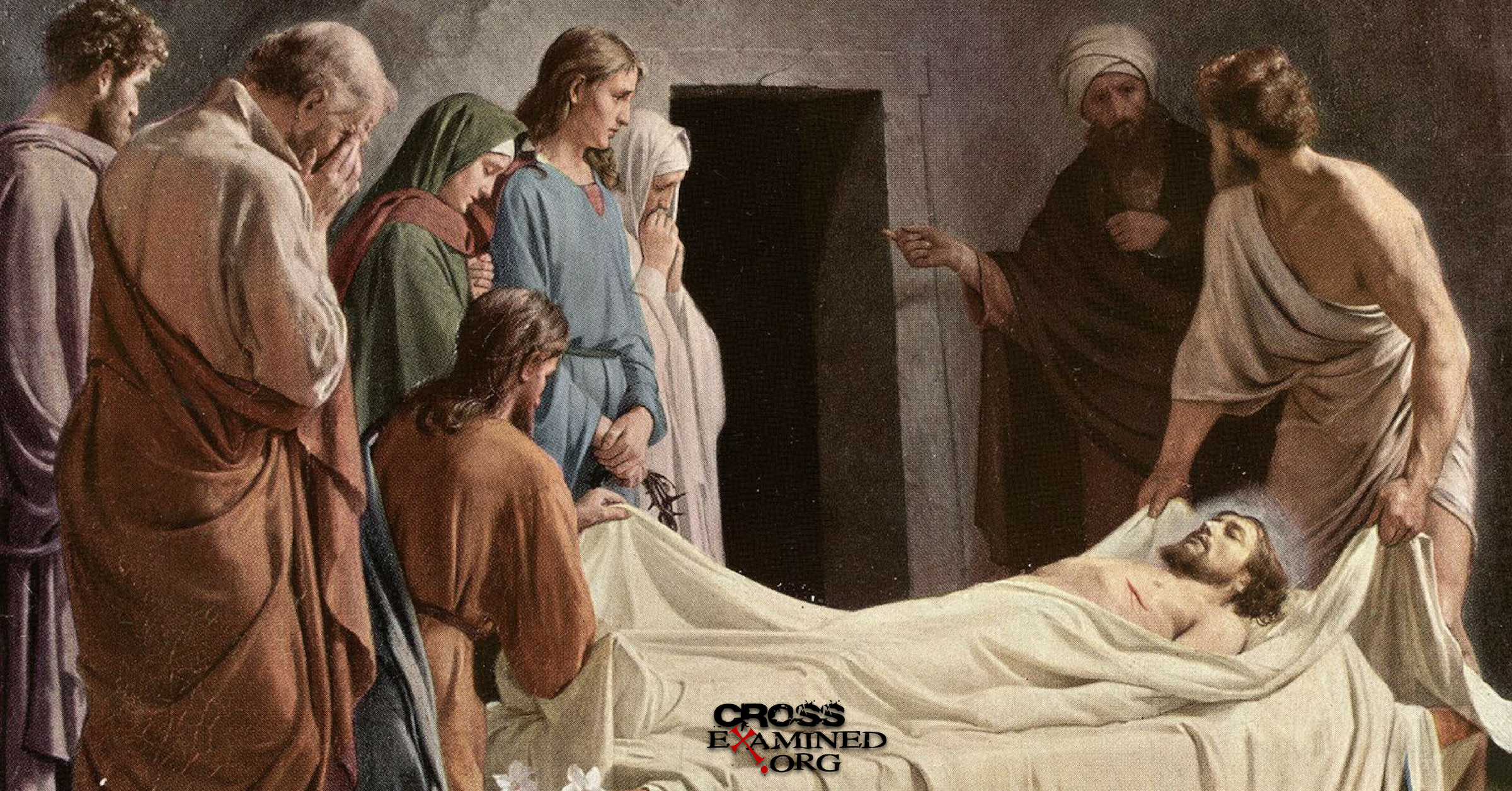A recent podcast listener offered the following objection: Couldn’t the disciples have been wrong about Jesus’ death? After all, when Paul was stoned by the Jews of Antioch and Iconium (in Acts 14 ) they dragged him out of the city and left him for dead. “ But the disciples surrounded him and he got up and went into the city ” (verse 20). If the disciples were wrong about Paul, couldn’t they have been wrong about Jesus too? As I always say, anything and everything is possible, but not everything is reasonable. There are good reasons to believe that the disciples were not wrong about Jesus’ death:
-
Prolonged contact
Unlike the contact with Paul after his stoning, the disciples had intimate and prolonged contact with the body of Jesus. We tend to read the following verses very quickly:
Mark 15:43-46
“ Joseph of Arimathea, a prominent member of the council… bought a linen cloth, and taking it off, wrapped it in the linen cloth, and laid it in a tomb that was hewn out of the rock…”
But stop and think about it for a minute. The disciples had to remove the nails, take the body down, carry it a distance to the tomb, prepare the body thoroughly with ointments and spices used on such occasions, wrap the body, and then place it in the tomb. While we can read the procedure in minutes, it takes much longer to actually complete. Surely the disciples were also deeply grieving over Jesus’ death. In all this prolonged contact with his body, do we really think that they didn’t go out of their way to prove to themselves that he wasn’t really dead? During all this time, is it reasonable to believe that they wouldn’t have noticed the three uncomfortable characteristics of dead bodies? I’ve been around enough dead people to recognize the characteristics that appear when a heart stops beating:
Temperature drop
When the heart stops beating, the body begins to grow cold. In the time it would take to prepare Jesus for the grave, the disciples would certainly have noticed this characteristic of death.
Rigidity
When blood is not circulating, the body begins to stiffen. Dead bodies begin to feel and behave differently than unconscious bodies with a beating heart.
Lividness
Gravity begins to act on the lack of blood circulation. When the blood remains in those extremities closest to the ground, the pigmentation is noticeable.
In all the time it took to prepare Jesus’ body, with all the time the disciples had in contact, is it reasonable to think that they would not have repeatedly checked to see if he was still breathing and that they would not have noticed the three uncomfortable characteristics of dead people?
-
Unexpected corroboration
John , a disciple of Jesus, grew up as a fisherman. I doubt he had any medical training. However, look at what he reports in his Gospel:
John 19:32-34
“ The soldiers came and broke the legs of the first man, and of the other man who had been crucified with him. But when they came to Jesus and saw that he was already dead, they did not break his legs. But one of the soldiers pierced his side with a lance, and immediately blood and water came out .”
John seems to record an aspect of Jesus’ body that is common when people are fatally wounded. Critical injuries typically cause people to go into circulatory shock, a condition I commonly see at the scenes of assaults or accidents. When people die from their wounds, their death is usually accompanied by Pericardial or Pleural Effusion , a condition that causes water to accumulate around the heart or inside the lungs. It appears that the illiterate fisherman is reporting this condition in his Gospel.
Do you think he could have done this intentionally in an effort to mislead us, or is it more reasonable to attribute his description to a true observation?
-
External confirmation
History tells us that Roman soldiers were to pay a terrible penalty if they allowed a capital criminal to escape or avoid the sentence to which he was sentenced. For this reason, Roman soldiers were ruthless and meticulous in carrying out their orders with precision . Look again at how the Bible describes the death of Jesus:
John 19:31 – 33
“ Then the Jews, because it was the Preparation Day, that the bodies should not remain on the cross on the Sabbath day (for that Sabbath day was a high day), begged Pilate that their legs might be broken, and that they might be taken away. So the soldiers came and broke the legs of the first, and of the other who had been crucified with him. But when they came to Jesus, and saw that he was dead already, they did not break his legs .”
According to non-Christians at the scene, Jesus was dead on the cross.
-
Connection with eyewitnesses
Look at the description of Jesus’ burial given in Mark’s Gospel. Note Joseph of Arimathea’s description:
Mark 15:42-46
“When evening came, (for it was the Preparation, that is, the day before the Sabbath,) Joseph of Arimathea, a distinguished member of the council, who himself was waiting for the kingdom of God, came and went boldly to Pilate and asked for the body of Jesus. Pilate was surprised that he was already dead; and when he had brought the centurion, he asked him if he were already dead. When the centurion had informed him, he gave the body to Joseph. Joseph bought a linen cloth, took it off, wrapped it in the linen cloth, and laid it in a tomb that was hewn out of rock. He rolled a stone against the entrance of the tomb.”
It appears that Mark is describing the same scene as John, but Mark includes a character that John omits. Why does Mark, writing many years before John, include Joseph? It stands to reason that Joseph was still alive when Mark wrote his account; Mark may be including Joseph so that early readers can contact Joseph as a living eyewitness who not only saw the crucifixion, but also touched and wrapped Jesus’ dead body.
The experience the disciples had with Jesus was very different from the experience the disciples had with Paul at the time of his stoning. The disciples simply “stood around” Paul after the stoning; they did much more with Jesus’ body after his crucifixion.
J. Warner Wallace is the author of Cold-Case Christianity, has a career spanning more than 25 years as a police officer and detective, holds a Master of Divinity from Golden Gate Baptist Theological Seminary, and is an adjunct professor of apologetics at BIOLA University.
Original Blog: http://bit.ly/2Sa4Df1
Translated by Raul Jaramillo
Edited by Maria Andreina Cerrada

